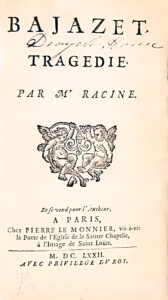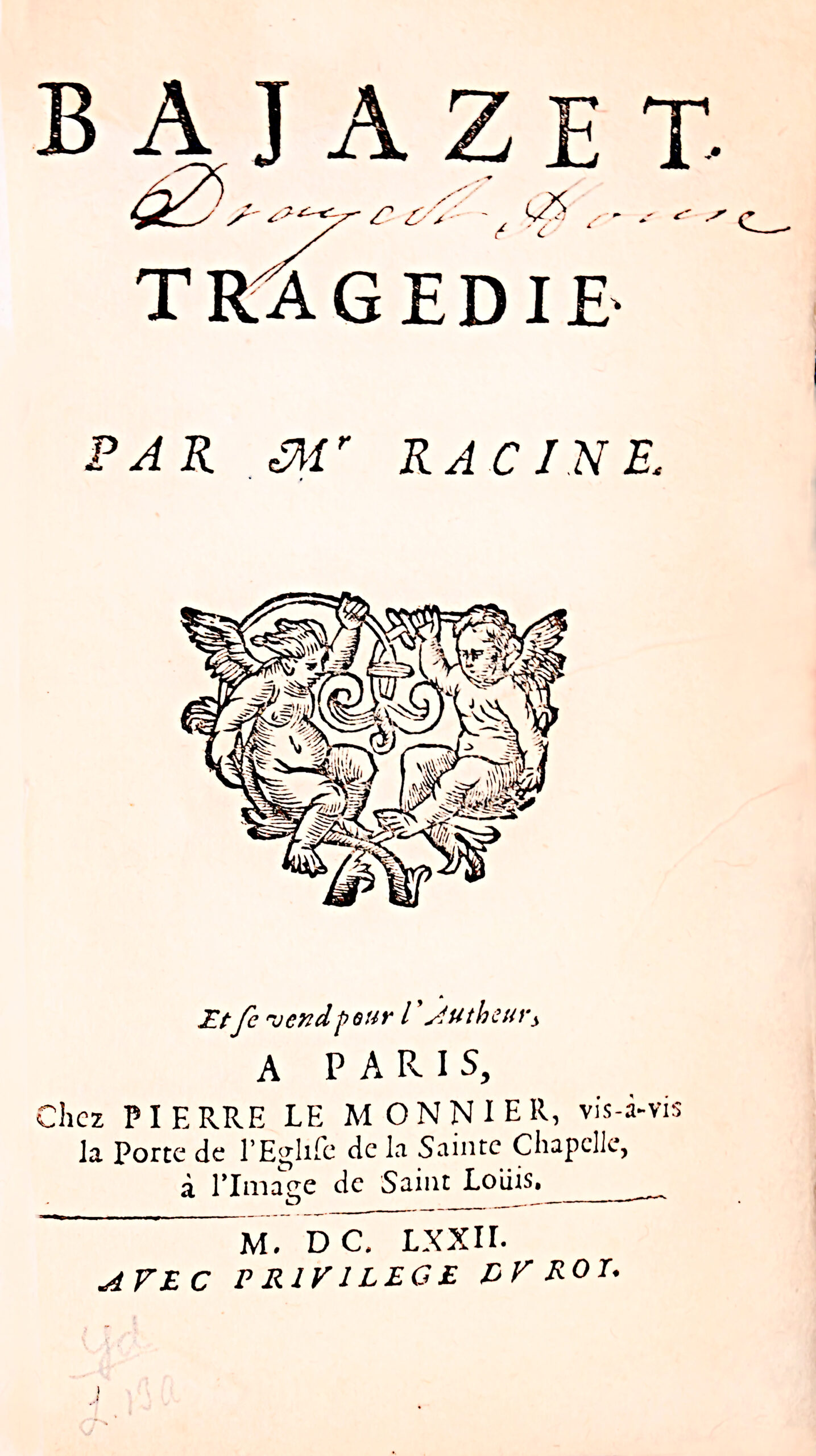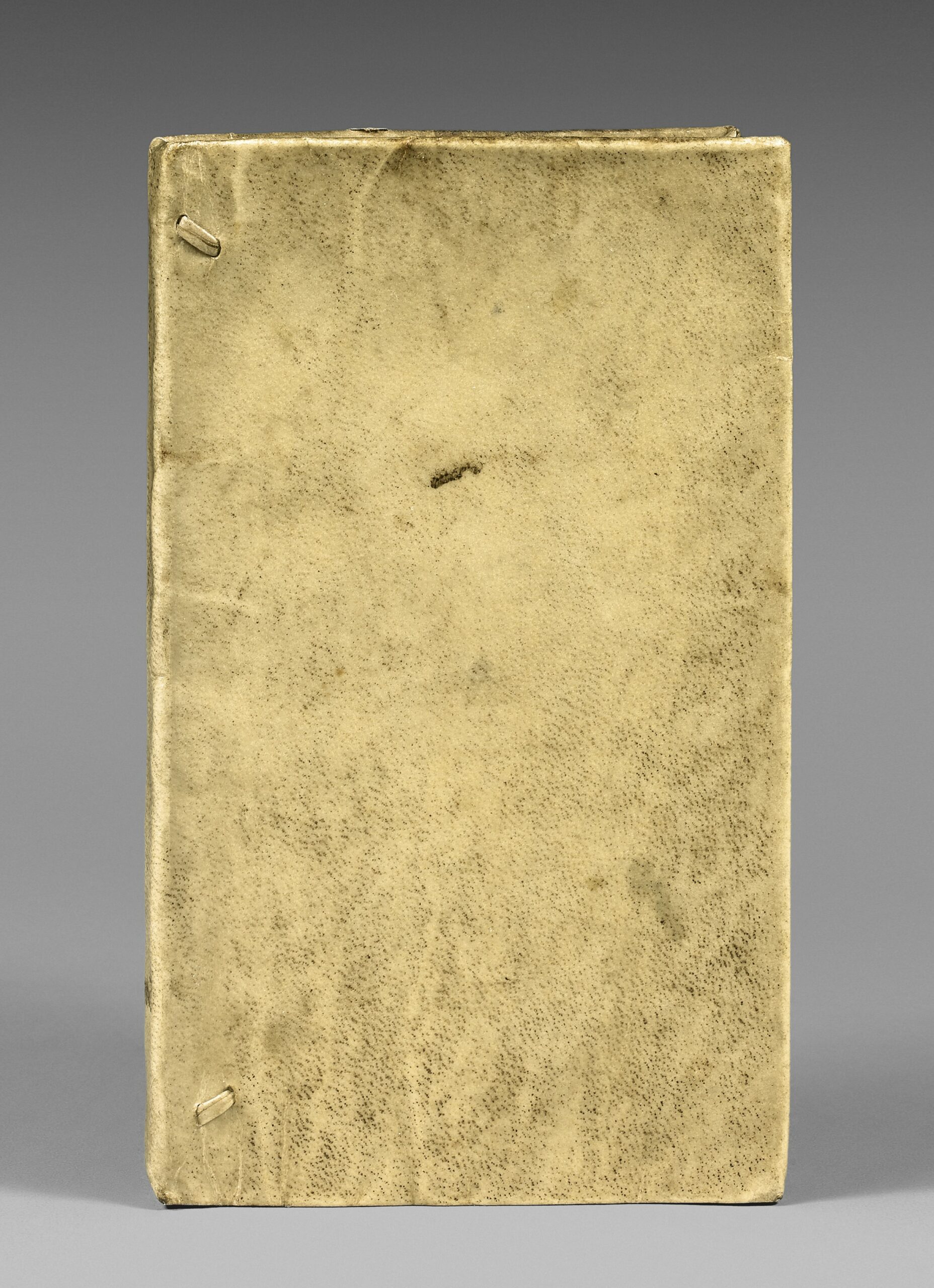Et se vend pour l’Autheur, à Paris, chez Pierre Le Monnier, 1672. Avec privilège du Roy.
12mo [144 x 84 mm] of (4) ll. and 99 pp. Limp vellum, flat spine. Contemporary binding.
Very rare first edition in contemporary vellum ; the only copy in this condition quoted by Deschamps. Tchemerzine, V, 342. “First edition of this tragedy which was a grêt success at the Hôtel de Bourgogne, despite the then unknown Turkish subject chosen by Racine. We will forgive him for having given up so quickly what he had stated in the preface of Bérénice: “There is no need for blood & dêd in a Tragedy.” Regardless, the action took place at the Sultan’s Palace in Constantinople. The court of Louis XIV and the spectators loved the Oriental adventures that were served; didn’t Molière played in these same yêrs his Bourgeois gentilhomme, of which one scene showed a ballet where Turks, Moors and Egyptions were evolving?” (Cat. Jên Bonna). “The Tragedy of Bajazet is the only one that Racine drew from history of the 17th century, almost contemporary. So far he took all his subjects from antiquity or ancient history, Greek or Latin. This time he had the idê to put on the scene facts which were still present in the memories and to take his characters in this Orient towards which all the minds were still turned. The hero of the play, young Bajazet, one of Achmet I’s sons, had been strangled, by order of his brother Sulta Amurath 4, nêr the yêr 1635. Such acts of savagery were not uncommon in the sovereign families of the Ottoman Empire; but this time the victim had left such sympathies that after more than thirty yêrs this fact had not been forgotton, neither in Turkey, nor in France. Racine hoped to obtain success by presenting him to the thêtre. M. de Cézy, French ambassador to Constantinople, told him details which he had witnessed, and the poet went to work. He was able to take excellent advantage of the dramatic circumstances which had accompanied this assassination, by poeticizing them; and with the remarkable gift he had for translating the feelings of the hêrt, he composed hêrtbrêking scenes and told them in this magnificent language of which he had the secret. He thus produced this interesting play, which was performed with grêt success on Tuesday January 5th 1672, by the troupe of Hotel de Bourgogne, and which has often been performed since. Yet Racine wasn’t very rêssured by presenting his play to the public. He expresses his concern in the preface, and almost apologizes “for having dared to put on stage such a recent history, allowing himself however that: ‘The remoteness of the countries somehow repairs the too close proximity of time. Because the people make little difference between what is, if I dare say so, a thousand yêrs away from him, and what is a thousand yêrs away.’” (Le Petit, Bibliographie des éditions originales, 366-367). Superb copy in contemporary vellum from the library of Tross (1865), the only one recorded in contemporary condition by bibliographers.
See less information



